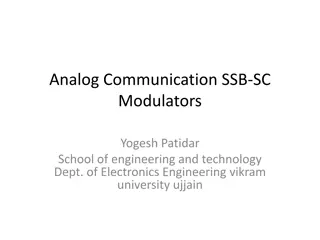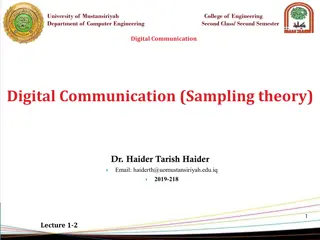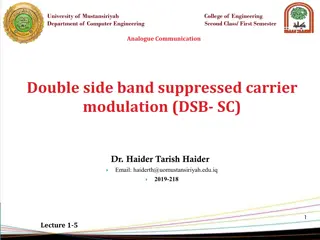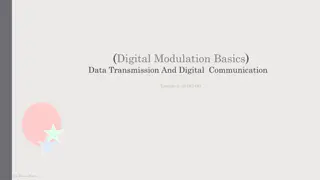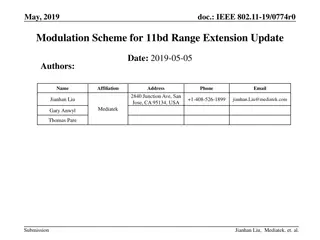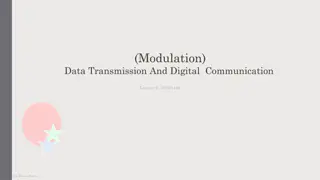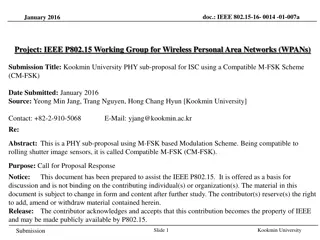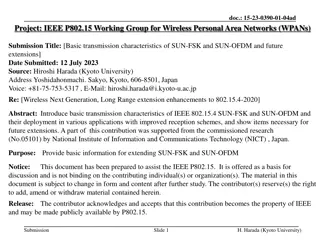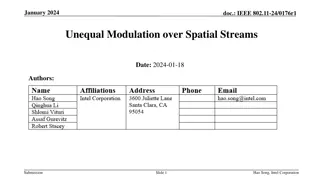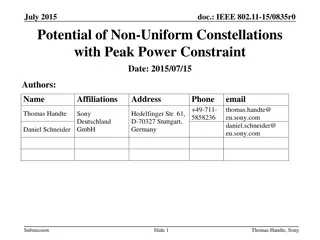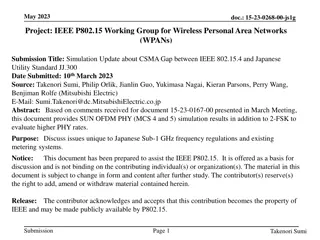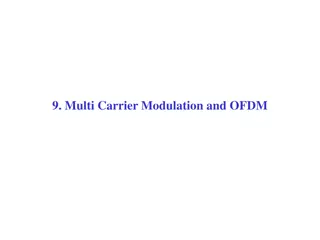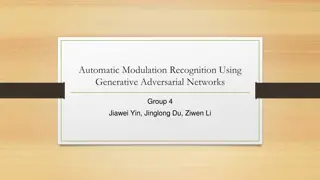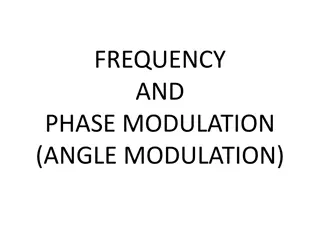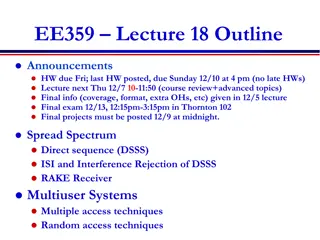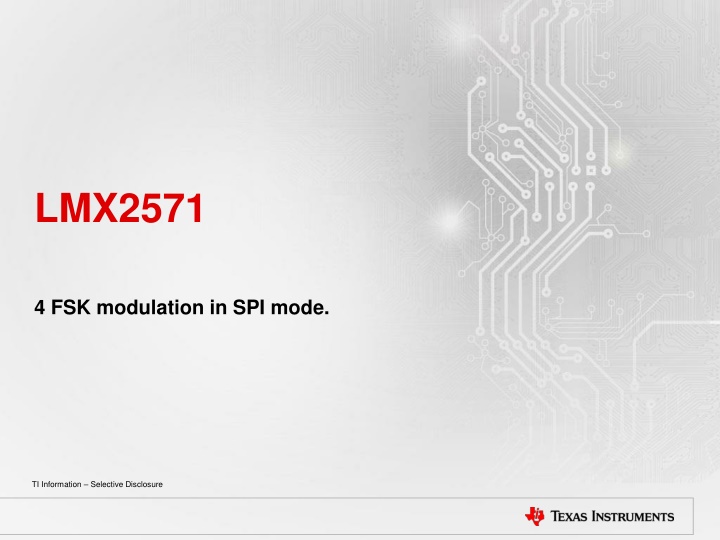
LMX25714 FSK Modulation in SPI Mode - Technical Information and Setup Description
Explore the LMX25714 FSK modulation setup using SPI mode, including specifications, limitations, SPI examples, and results. Learn about the pattern generator, Gaussian transmission, symbol oversampling, frequency deviation, and key advantages of the system. Discover new improvements in the upcoming silicon and the self-calibrated system operation. View related images and PCB details from September 2014.
Download Presentation

Please find below an Image/Link to download the presentation.
The content on the website is provided AS IS for your information and personal use only. It may not be sold, licensed, or shared on other websites without obtaining consent from the author. If you encounter any issues during the download, it is possible that the publisher has removed the file from their server.
You are allowed to download the files provided on this website for personal or commercial use, subject to the condition that they are used lawfully. All files are the property of their respective owners.
The content on the website is provided AS IS for your information and personal use only. It may not be sold, licensed, or shared on other websites without obtaining consent from the author.
E N D
Presentation Transcript
LMX2571 4 FSK modulation in SPI mode. TI Information Selective Disclosure TI Confidential Maximum Restrictions
Setup description A pattern generator is streaming SPI write to produce the 4 FSK modulation. 160 random symbol are being sent in a loop so randomization is not ideal. Specifications: Gaussian transmission 4FSK BT = 0.63 Symbol oversampling = 4 Symbol rate = 60kHz Fc = 868 MHz Freq. deviation +/- 17 and +/- 50 kHz. Limitations: Current silicon requires 2 SPI write per data point Current setup (wirering/pcb) does not allow speed to go to 110k symbol/s. New Si will: have I2S style interface and SPI specifications is 50 MHz now 2 TI Confidential Maximum Restrictions
SPI example R11 and R37 are written for each data point. Each register is 24 bit long and includes address (8 bit) and data (16 bit): time[us] 0.000000 2.272727 4.545455 freq[kHz] 49.9 49.9 49.1 code R11 [hex] 0B003E 0B003E 0B003D code R37 [hex] 0252C38 0252C38 0252C38 Key advantages of this technique are: Self calibrated system with closed loop operation. Immune from process, voltage and temperature. No additional components required. 3 TI Confidential Maximum Restrictions
Results 4 TI Confidential Maximum Restrictions
Results 5 TI Confidential Maximum Restrictions
PCB 6 TI Confidential Maximum Restrictions
Sept. 2014 7 TI Confidential Maximum Restrictions


